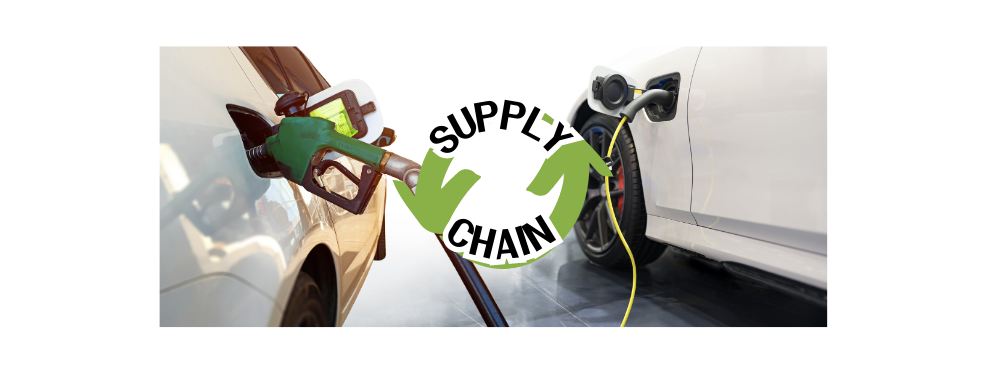There’s an unprecedented supply chain transformation happening in the automotive industry. On the electric vehicle side (EVs), experts estimate that manufacturers will spend more than $1.2 trillion through 2030, creating millions of electric vehicles. However, the existing supply chain for internal combustion engines (ICE) still won’t disappear. There are two separate supply chains, and while there is a strong push for an EV transition away from ICE vehicles, what is happening regarding both?
To put it into perspective—here’s a major difference between the two camps that couldn’t be clearer—electric motors that power EVs use far fewer components than an ICE vehicle. According to CleanTechnica, a Chevrolet Bolt has three main moving parts in the drivetrain and 13 pieces that move with them. In comparison, according to an article in Forbes, the drivetrain of an ICE vehicle contains 2,000+ moving parts. The percentage of an EVs’ value added by component suppliers may be 35% to 40%, compared with 50% to 55% of an ICE-powered car.
The sophisticated technology of an EV is not as easy to source and mass produce, and the EV battery is a good example. These batteries use lithium, nickel, and cobalt from China, South Africa, Indonesia, and the Democratic Republic of Congo (DRC). Given labor and sustainability issues, EV manufacturers are challenged with how and where to source the materials. It’s not just batteries. A viable sourcing strategy for semiconductors and other high-risk components is also necessary.
Even as the materials may be in short supply, EV funds are growing. For example, in just the few short months since the Inflation Reduction Act was passed, the United States has seen more than $40 billion worth of new investment announcements across the battery supply chain.
The ICE camp is losing its market dominance, and although growth has not yet stopped, expectations are that a plateau isn’t that far off. Although the transition to electric vehicles (EVs) is already underway, many value-creation options exist for ICE suppliers over the ear and medium term. Still viable are such areas as new-vehicle programs and the aftermarket. Taking a zero-based approach to managing costs will be critical for this segment.
ICE-component suppliers can develop tailored strategies, incentives, and metrics, including:
- Optimized manufacturing
- General and administrative staffing
- Digital technology that supports growth and enables execution
- Supply base restructuring
- Capital planning to avoid assets committed too far into the future
- Develop new core business to offset ICE revenue decline
According to McKinsey, “…although the industry is well established, and ICE-product technology is mature, there’s a broad range of performance along the key subcomponents of ROIC. If the lower performers elevate performance to match the industry median, they could improve their value by 30 to 40 percent from baseline.” Those ICE-component suppliers implementing a growth and diversified approach may be attractive targets for venture-capital funds and other turnaround investors.
The two camps have an entirely different approach. While the classic automotive manufacturing supply chains place the OEM at the top of a pyramid of regional strata trickling down to Tier 1, Tier 2, Tier 3, and below, The EV supply chain isn’t a pyramid—it’s a network.
The increased demand for EVs may be lowering emissions and reducing fuel costs. However, it’s causing havoc with the automotive industry’s existing supply chain challenges—especially those involving component and raw materials shortages, high production costs, shipping delays, and inefficient production processes. Disruptions can impact economies, cause delays for suppliers, increase transportation costs, force job cuts, and hinder transportation decarbonization.
Governments are pushing the auto industry to boost fuel economy in key global markets, including Europe and China. Given that push, expect a substantial shift towards EVs. This will disrupt the automotive supplier base, and eventually, that disruption will be profound.
Even if some markets, such as the U.S., remain heavily ICE-focused in the near term, the global shift to EVs should be at the top of all planning. Suppliers that provide components for ICE vehicles are likely to face a significant threat if they cannot adapt.

